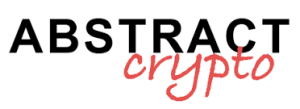The regulation of stablecoin is set to become law by August 2025, marking a significant milestone for the adoption of blockchain and digital assets.
This important development was reiterated by Brad Garlinghouse, CEO of Ripple, during the XRP Ledger Apex conference in Singapore, where he linked the success of Circle’s $9 billion IPO to the growing investor confidence in stablecoin regulations.
IPO di Circle confirms the push towards the regulation of stablecoins
The IPO of Circle, a key company in the stablecoin sector, has served as a true catalyst for regulatory debate. The stock market listing has clearly demonstrated the interest of institutional and retail investors in the world of regulated cryptocurrencies.
Brad Garlinghouse highlighted how the outcome of the IPO is a clear testament to the financial interest in the crypto sector:
“The IPO of Circle went very well. This reflects the interest of investors, both institutional and retail. The future of finance will be based on blockchain.”
Furthermore, the success of Circle confirms that the market is betting confidently on the rapid approval of the GENIUS Act, which will regulate stablecoins and promote the mass adoption of blockchain technology.
The genesis of the GENIUS Act and its importance in the markets
The GENIUS Act bill is designed to provide a clear and secure regulatory framework for stablecoin, digital assets pegged to fiat currencies, and therefore more stable compared to other cryptocurrencies. Garlinghouse has anticipated an acceleration in the legislative phase, expected to be completed by the summer recess of Congress.
He declared with confidence:
“The regulatory difficulties have now become a favorable wind in the United States, and this is positive for the global market. We do not want deregulation, but clear regulation, and the progress is evident.”
This statement highlights how the sector is calling for transparent rules that can reduce uncertainty and promote sustainable growth. The regulation represents a crucial element for effectively integrating with the traditional financial system.
Impact of stablecoin regulation on the market and blockchain adoption
The anticipated approval of the GENIUS Act is already positively influencing the market, driving stronger interest from institutional investors, who are seeking new safe opportunities to integrate blockchain into their portfolios.
This regulatory clarity could remove many of the barriers that have so far hindered the adoption of blockchain on a large scale. With precise rules, operators will be able to move with greater security, increasing the spread of digital assets.
A global context of stablecoin regulation
Not only the United States is making progress: other major financial markets are also moving towards a structured regulation of stablecoins. For example, Hong Kong has recently approved new legislation, while South Korea is working on similar proposals.
This signals a coordinated international commitment to establish effective regulatory standards. Such cooperation is essential to ensure that fintech innovation can develop sustainably, avoiding risks of fragmentation or regulatory arbitrage between different markets.
Why stablecoin regulation is a turning point
The adoption of the GENIUS Act and the regulation of stablecoins represent a milestone in the transition towards a more advanced digital financial system. Regulatory transparency will offer greater trust to investors, also encouraging broader participation from the traditional financial sector.
The direct consequence will be a significant boost to blockchain innovation, with possible positive impacts in multiple sectors such as payments, financing, and asset management.
Ripple and the vision of a blockchain-based future
Garlinghouse reiterated the belief that the future of finance is closely linked to blockchain technology, despite the regulatory challenges of recent years. The success of Circle and the prospect of stable regulation are encouraging signals for the entire industry.
The leadership of Ripple (XRP) in this field demonstrates how the blockchain ecosystem is maturing and how clarity on stablecoins will be a decisive lever for their global spread.
Towards a future of opportunity and sustainable innovation
In summary, the horizon of the approval of the GENIUS Act by August 2025 opens new prospects for digital finance. The clear regulation of stablecoins will not only provide stability to the market but also help integrate blockchain into financial systems, promoting mass adoption.
Investors and industry operators are called to closely observe these developments, ready to seize the opportunities offered by a more structured and transparent market.
At the same time, it will be essential to maintain a constructive dialogue between institutions, companies in the sector, and investors to ensure an effective, secure, and innovative blockchain ecosystem.


